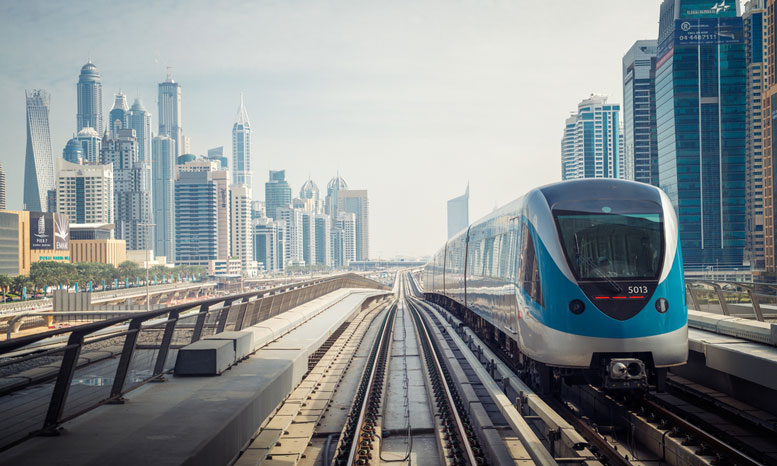Dubai Metro has officially crossed the one billion rider mark, as announced by Matar Al Tayer, director-general and chairman of the Roads & Transport Authority (RTA).
Since the launch of the service on September 9, 2009, and till the end of August 2017, the metro has ferried 1.028 billion riders (689 million riders on the Red Line and 339 million riders on the Green Line).
Al Tayer commented on the workings of the metro: The Dubai Metro, which extends 75 km, has an array of features that give it a unique standing worldwide. It is the longest driver-less metro line across the world. Union station is considered the worlds biggest underground metro station, spanning an area of 25,000 sqm. Burjuman station is widely known as one of the gorgeous metro stations in the world.”
 The Red Line of the Dubai Metro has served more than 689 million riders, since it opened on September 9th 2009, and has seen a sustained growth in ridership. The number of metro riders has soared by 54%, from 38.887 million riders in 2010, to 60 million riders in 2011. The number shot to 104 million riders in 2014, and grew further to 121 million riders in 121 million riders in 2016.
The Red Line of the Dubai Metro has served more than 689 million riders, since it opened on September 9th 2009, and has seen a sustained growth in ridership. The number of metro riders has soared by 54%, from 38.887 million riders in 2010, to 60 million riders in 2011. The number shot to 104 million riders in 2014, and grew further to 121 million riders in 121 million riders in 2016.
 Union Station accounted for the largest number of Red Line users, recording 47.798 million riders, followed by Deira City Center Station (46.878 million riders), just ahead of Burjuman Station (46.749 million riders), and followed by Al Rigga Station, which served about 44 million riders.
Union Station accounted for the largest number of Red Line users, recording 47.798 million riders, followed by Deira City Center Station (46.878 million riders), just ahead of Burjuman Station (46.749 million riders), and followed by Al Rigga Station, which served about 44 million riders.
S ince its opening on 9th September, 2011, the Green Line has served about 339 million riders. The number picked up from 37.576 million riders in 2012, to 48.872 million riders in 2013, recording a 30% growth rate. It continued the upward trend to reach 65.942 million riders in 2015, and further grew to 69.708 million riders in 2016.
ince its opening on 9th September, 2011, the Green Line has served about 339 million riders. The number picked up from 37.576 million riders in 2012, to 48.872 million riders in 2013, recording a 30% growth rate. It continued the upward trend to reach 65.942 million riders in 2015, and further grew to 69.708 million riders in 2016.
 Al Fahidi Station ranked first as far as ridership is concerned as it had been used by 37.928 million riders, followed by Baniyas Station (33.547 million riders), Al Ghubaiba Station (26 million riders) and Oud Metha Station (24 million riders).
Al Fahidi Station ranked first as far as ridership is concerned as it had been used by 37.928 million riders, followed by Baniyas Station (33.547 million riders), Al Ghubaiba Station (26 million riders) and Oud Metha Station (24 million riders).
Al Tayer added: The RTA is moving ahead with its ambitious plan to revamp mass transit systems, and raise the share of public transport in the peoples mobility to as much as 30% by 2030. This rate reached 16%t in 2016, and it will rise to 24% if we add taxis. Moreover, there is a remarkable evolution in the culture of the community and its perception of public transport means. The Metro has started to bring back several benefits to the community such as the psychological and physical relief associated with the smooth mobility, and the reduced expenditure on car fuel and maintenance.”

